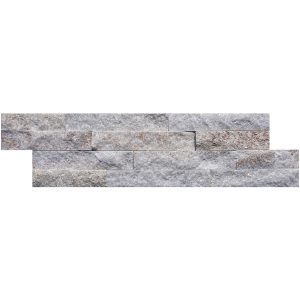Introduction
In the world of construction and interior design, the use of stone has always been synonymous with elegance, luxury, and durability. However, the traditional approach of using natural stone can be expensive, heavy, and time-consuming to install. This is where cultured stone veneer comes in – a versatile and cost-effective alternative that replicates the look and feel of natural stone while offering numerous advantages in terms of installation, maintenance, and design flexibility.
What is Cultured Stone Veneer?
Cultured stone veneer, also known as manufactured or artificial stone, is a lightweight and versatile material that is designed to mimic the appearance of natural stone. It is made by using a mixture of cement, aggregates, and iron oxides to create a moldable material that can be shaped and colored to resemble various types of natural stone such as limestone, slate, and granite. Choosing the right stone veneer color is typically cast in molds to create individual stone units that are then installed on walls, fireplaces, and other surfaces using mortar or adhesive.
Advantages of Cultured Stone Veneer
1. Cost-Effective: One of the primary advantages of cultured stone veneer is its cost-effectiveness compared to natural stone. Cultured stone is generally more affordable to purchase and install, making it an attractive option for homeowners and builders looking to achieve the look of real stone without breaking the bank.
2. Lightweight: Cultured stone veneer is significantly lighter than natural stone, making it easier to handle and transport. This lightweight nature also allows for easier installation on various surfaces, including walls, pillars, and fireplaces, without the need for additional structural support.
3. Easy Installation: Installing cultured stone veneer is a relatively simple process that can be completed by DIY enthusiasts or professional installers. The individual stone units are designed to interlock seamlessly, creating a uniform and natural-looking finish. This ease of installation can save time and money compared to the labor-intensive process of working with natural stone.
4. Durability: Despite being lighter than natural stone, cultured stone veneer is highly durable and weather-resistant. It can withstand extreme temperatures, moisture, and UV exposure without fading or deteriorating, making it a long-lasting option for both interior and exterior applications.
5. Versatility: Cultured stone veneer comes in a wide range of colors, textures, and shapes, allowing for endless design possibilities. Whether you prefer a rustic, traditional, or contemporary look, there is a cultured stone veneer option to suit your style and aesthetic preferences.
6. Low Maintenance: Unlike natural stone, cultured stone veneer requires minimal maintenance to keep it looking its best. Regular cleaning with a mild detergent and water is usually all that is needed to preserve the beauty and integrity of the stone.
Applications of Cultured Stone Veneer
Cultured stone veneer can be used in a variety of applications both indoors and outdoors, adding a touch of elegance and sophistication to any space. Some common applications of cultured stone veneer include:

1. Accent Walls: Cultured stone veneer can be used to create stunning accent walls in living rooms, bedrooms, and entryways, adding texture and visual interest to the space.
2. Fireplaces: A fireplace clad in cultured stone veneer can become a focal point in any room, providing a warm and inviting ambiance while showcasing the beauty of the stone.
3. Exterior Facades: Cultured stone veneer can be used to enhance the exterior of a home or building, adding curb appeal and increasing property value.
4. Outdoor Kitchen and BBQ Islands: Cultured stone veneer is a popular choice for outdoor kitchens and BBQ islands, providing a durable and stylish surface that can withstand the elements.
5. Garden Walls and Retaining Walls: Cultured stone veneer can be used to create decorative garden walls and retaining walls, adding a touch of elegance to outdoor landscapes.
6. Columns and Pillars: Cultured stone veneer can be used to clad columns and pillars, adding architectural interest and enhancing the overall design of a space.
Maintenance and Care
While cultured stone veneer is relatively low maintenance compared to natural stone, proper care is still necessary to ensure its longevity and beauty. Here are some tips for maintaining and caring for cultured stone veneer:
1. Regular Cleaning: To keep cultured stone veneer looking its best, it is important to regularly clean the surface with a mild detergent and water. Avoid using harsh chemicals or abrasive cleaners, as these can damage the finish of the stone.
2. Sealing: Depending on the specific type of cultured stone veneer used, it may be beneficial to apply a sealant to protect the surface from stains and moisture. Consult with the manufacturer or a professional installer for guidance on sealing your specific type of stone.
3. Inspect for Damage: Periodically inspect the cultured stone veneer for any signs of damage, such as cracks, chips, or discoloration. Address any issues promptly to prevent further damage and maintain the integrity of the stone.
4. Avoid Abrasive Cleaning Tools: When cleaning cultured stone veneer, avoid using abrasive cleaning tools such as wire brushes or steel wool, as these can scratch the surface of the stone. Instead, use a soft brush or cloth to gently remove dirt and debris.
5. Avoid High-Pressure Washing: While cultured stone veneer is durable, it is best to avoid using high-pressure washing equipment, as this can damage the surface of the stone. Opt for gentle cleaning methods to preserve the integrity of the stone.
In conclusion, cultured stone veneer offers a cost-effective, lightweight, and versatile alternative to natural stone that allows homeowners and builders to achieve the look of real stone without the associated drawbacks. With its durability, ease of installation, and wide range of design options, cultured stone veneer is a popular choice for a variety of interior and exterior applications. By following proper maintenance and care guidelines, cultured stone veneer can provide a beautiful and long-lasting finish that enhances the aesthetic appeal of any space.
